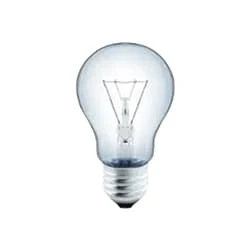Day Night Sensor Wiring diagram | Photocell Sensor wiring
Day Night Sensor Wiring diagram:
This diagram shows how to connect the Day Night Sensor Wiring diagram. This Night light With an Energy-Efficient LED (Light Emitting Diode) can be Plugged into the Socket and has a light sensor so that the lamp switches on automatically when it gets dark. In this circuit diagram, we just try to describe how to easily connect a day-night sensor with 2 lights. If you want to know more clear details please check our youtube video link below.
Diagram of Day Night Sensor Wiring:
 |
| Fig 1: Day Night Sensor Wiring diagram |
Components Need for this Project:
You can get the components from any of the sites below:
- Magnetic Contactor [See Buy Click Amazon]
- Day Night Sensor [See Buy Click Amazon]
- DP MCB [See Buy Click Amazon]
- Light [See Buy Click Amazon]
*Please note: These are affiliate links. I may make a commission if you buy the components through these links. I would appreciate your support in this way!
$ads={1}
Read Also:
Components used to make the Day Night Sensor Wiring:
01. Magnetic Contactor
 |
| Fig 2: Magnetic Contactor |
A magnetic contactor is an electrical device used for load control, automation, and protection. It is much like a magnetic reel. However, relays are generally used for low power and voltage, on the other hand, when we think of high power, these heavy-duty contractors only come to mind. It basically works by switching the load on and off. It has 3 terminals whose inputs are denoted as L1, L2, L3, and outputs as T1, T2, and T3. The circuit of the load is made in automation mode or protection using auxiliary contacts. It has two types of terminals. 1) Normally Open (NO). 2) Normally Closed (NC).
02. Day Night Sensor
 |
| Fig 3: Day Night Sensor |
An Automatic Day Night Light Sensor Switch can Switch on Any Electrical Device Automatically When Dark Falls And Switch off in the Morning Automatically. This Night light With an Energy-Efficient LED (Light Emitting Diode) can be Plugged into the Socket and has a light sensor so that the lamp switches on automatically when it gets dark. This is a Photo Technology-Based automatic sensor switch for 220V AC mains, which can be Widely Used in Street Lights, Factories, Gardens, Shops, Etc., and Other Places for Automatic Lighting. Turns ON the Light in the Dark & Turns OFF in The Light.
03. DP MCB
 |
| Fig 4: DP MCB |
Double pole MCB can control two wires. This circuit breaker is generally used in single-phase electric lines. Double pole MCB circuit breaker input has two wires supply two wires and an output. In a single-phase line, A double-pole MCB circuit breaker is used to give good production. This circuit breaker is provided through phase and neutral circuit breaker, it is very safe. This circuit breaker is preferred for home appliances. A DP MCB usually trips for 2 reasons 1. Overload 2. Short circuit.
04. Light
 |
| Fig 5: Light |
CFLs work in a completely different way from ordinary lamps, they work by using a different process called fluorescence rather than generating light from heat. A typical light bulb wastes 90% of energy and converts only 10% of energy into light, this is where CFL has the biggest advantage. CFL- Curved or conical glass tube filled with argon and a small amount of mercury vapor. The inner wall of the glass is coated with fluorescent material. CFL- It is manufactured using the principle of creating fluorescent light. CFL- Originally white in color but now the construction and use of CFLs producing colored light has become popular.
Thank You for visiting the website. Keep visiting for more Updates.
$ads={2}
Frequently Asked Questions
How do you test a day-night sensor with a multimeter?
The easiest way to determine how your photocell works is to connect a multimeter in resistance-measurement mode to the two leads and see how the resistance changes when shading the sensor with your hand, turning off lights, etc. Because the resistance of the changes a lot, an auto-ranging meter works well here.
Where do you put a daylight sensor?
The sensor should be placed 4 to 8 feet away from the window ( or 2 times the height of the window) Revised 23.10.20 Page 3 Page 4 • Check that the daylight sensor's view is not obscured. Avoid putting the sensor in direct light from nearby lighting fixtures.
How do you test a daylight light sensor?
To begin testing your light during daylight hours, slide the "On-Time" of the switch on the sensor head to the "Test" position. For the initial test, your “Range” (and “Sensitivity”) controls would be set to their lowest setting or all other features would be turned off.
How many daylight sensors do I need?
Ensure that the view of the daylight to the sensor is not obstructed (e.g. ceiling fans or pendant fixtures). Allocate 1 sensor for each partition of the space such as a private office. In case of an open office allocate 1 sensor at least every 30 linear feet of window wall.
Do IR sensors work in daylight?
Infrared (IR) sensors may not work effectively in direct sunlight because sunlight contains a large amount of infrared radiation, which can interfere with the sensor's ability to accurately detect other sources of infrared radiation.






Post a Comment
Do leave your comments